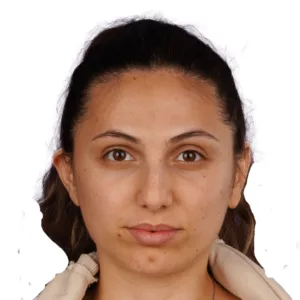Breast Reduction
WHAT IS BREAST REDUCTION SURGERY?
Breast reduction, also known as reduction mammaplasty, is a plastic surgery procedure. It is designed to reduce the size and weight of overly large breasts. The primary goal is to alleviate physical discomforts, such as;
- Back pain.
- Neck pain.
- Shoulder grooves.
- Skin irritation.
Additionally, the procedure can improve the proportion of the breasts in relation to the body. It also enhances self-confidence and overall quality of life.
CANDIDATES FOR BREAST REDUCTION
Candidates for breast reduction surgery are typically women who experience physical discomfort, emotional distress, or functional limitations due to having overly large and heavy breasts size. While individual circumstances may vary, ideal candidates for breast reduction generally meet the following criteria:
- Physical discomfort: Women experiencing chronic back, neck, and shoulder pain, shoulder grooves from bra straps, or skin irritation and rashes beneath the breasts due to their size and weight.
- Functional limitations: Those who face difficulty engaging in physical activities, such as exercise or sports, due to the size and weight of their breasts.
- Emotional distress: Women who feel self-conscious, embarrassed, or have a negative body image due to the size of their breasts.
- Proportion and balance: Candidates seeking to improve their body’s overall balance and proportion by reducing the size of their breasts.
- Good general health: Ideal candidates should be in good overall health, without any medical conditions that could increase the risk of complications or affect the healing process.
- Non-smokers: Smoking can increase the risk of complications and impede the healing process, so it is best if candidates are non-smokers or willing to quit smoking before and after surgery.
- Stable weight: It is best if candidates are at or near their ideal weight, as significant weight fluctuations can affect the surgery results.
Determine if you are a suitable candidate for breast reduction surgery. It is essential to consult with a board-certified plastic surgeon to discuss your goals, concerns, and expectations. The surgeon will evaluate your medical history, anatomy, and the specific issues you wish to address. After all these, the doctor will recommend the most appropriate surgical approach for your case.
PRE-BREAST REDUCTION SURGERY TIPS
Preparing for breast reduction surgery is essential to ensure a smooth procedure and recovery. Here are some tips to help you prepare for the surgery:
- Medical evaluation: Obtain a thorough medical evaluation, including a complete medical history, physical examination, and necessary lab tests. That will help your surgeon assess your overall health and identify any potential risks or contraindications for surgery.
- Medications: Inform your surgeon about any medications, supplements, or herbal remedies you take. You may be asked to stop taking certain medications, such as aspirin, anti-inflammatory drugs, or blood thinners, before surgery to minimize the risk of bleeding.
- Smoking: If you are a smoker, quitting smoking at least 4-6 weeks before surgery is essential. Smoking can significantly increase the risk of complications and impede the healing process.
- Maintain a healthy weight: Aim to reach your ideal weight before surgery. Significant weight fluctuations can affect the surgery results.
By following these tips and working closely with your surgeon, you can help ensure a successful breast reduction surgery and a smooth recovery. Open communication with your surgeon is vital, so do not hesitate to ask questions or voice any concerns.
STAGES OF BREAST REDUCTION SURGERY
Breast reduction surgery, or reduction mammoplasty, typically involves several stages, from preparation to recovery. Here is an overview of the critical steps of breast reduction surgery:
- Anesthesia: On the day of surgery, the patient is administered anesthesia. Generally, general anesthesia ensures comfort and pain control during the procedure.
- Incisions: The surgeon makes incisions on the breasts based on the chosen surgical technique. Common incision patterns include the anchor (inverted-T), vertical (lollipop), or periareolar incision.
- Tissue removal and reshaping: The surgeon removes fatty tissue and removes excess breast skin. Reshapes the breast tissue to create a smaller, more proportionate breast. The nipple and areola may be repositioned to a higher, more natural location on the breast. In some cases, the size of the areola may be reduced.
- Closing the incisions: Once the breasts have been reshaped, the surgeon closes the incisions using sutures, skin adhesives, or surgical tape. The incisions are typically placed in a way that minimizes visible scarring.
- Results: It may take several weeks to months for the final results of breast reduction surgery to be fully visible. This is due to the subsidence of swelling and the breasts settling into their new shape.
POST-BREAST REDUCTION SURGERY TIPS
Taking good care of the surgery area and your overall health after the surgery is essential. The post-breast reduction surgery tips to help ensure a smooth recovery are as follows:
- Manage pain and swelling: Use prescribed pain medications and cold compresses to alleviate pain and swelling.
- Wear a supportive bra: Wear a surgical bra or supportive bra as your surgeon recommends to provide support and minimize swelling.
- Maintain good hygiene: Keep the incision sites clean and dry, and follow your surgeon’s instructions for bathing and wound care.
- Avoid strenuous activities: Refrain from heavy lifting and vigorous exercise for a while, usually 4-6 weeks.
- Sleep in an elevated position: Keep your upper body slightly elevated while sleeping to help reduce swelling.
- Stay hydrated and maintain a healthy diet: Drink plenty of water and eat nutritious meals to support your body’s healing process.
- Avoid smoking: Refrain from smoking or using tobacco products, as they can impede healing and increase the risk of complications.
Before - After Gallery
Take a look at the outstanding results of our previous Plastic surgery patients, then decide for yourself.
FAQ
How much is a breast reduction?
The cost of a breast reduction surgery varies depending on several factors such as the location of the surgery, the surgeon’s experience, the extent of the procedure, and the facility fees. In general, the cost of a breast reduction surgery can range from $5,000 to $10,000 or more.
How much is breast reduction surgery?
The cost of a breast reduction surgery varies depending on several factors such as the location of the surgery, the surgeon’s experience, the extent of the procedure, and the facility fees. In general, the cost of a breast reduction surgery can range from $5,000 to $10,000 or more.
How long after breast reduction will I know my size?
The final results of breast reduction surgery may take several months to become fully visible, as the breasts will continue to settle and heal during this time.
Can you breastfeed after a breast reduction?
Breastfeeding after a breast reduction surgery may be possible, but it may depend on the extent of the procedure and the individual’s anatomy. It is important to discuss any concerns about breastfeeding with the surgeon prior to the surgery.
How long is recovery from breast reduction?
The recovery time for breast reduction surgery varies depending on the individual’s health, the extent of the procedure, and the surgeon’s technique. In general, patients can expect to take several weeks off from work and other activities to allow for proper healing.
What is a breast reduction?
A breast reduction is a surgical procedure that removes excess breast tissue, skin, and fat to reduce the size and weight of the breasts, alleviate discomfort, and improve the overall appearance of the breasts.
How long does breast reduction surgery take?
The length of a breast reduction surgery depends on the individual case and the extent of the procedure. In general, the surgery can take between two to four hours to complete.
How does a breast reduction work?
A breast reduction surgery involves removing excess breast tissue, skin, and fat to reduce the size and weight of the breasts, and reshape them to a more aesthetically pleasing and proportionate size and shape.
Is breast reduction surgery safe?
Breast reduction surgery is generally safe when performed by a qualified and experienced surgeon. However, like any surgical procedure, it does carry some risks, such as bleeding, infection, scarring, and anesthesia-related complications.




BLOG & NEWS
BLOG
Which Breast Augmentation Implant Is the Best?
see all

NEWS
TURKEYANA REDEFINING THE CONCEPT OF BEAUTY
see all



















































